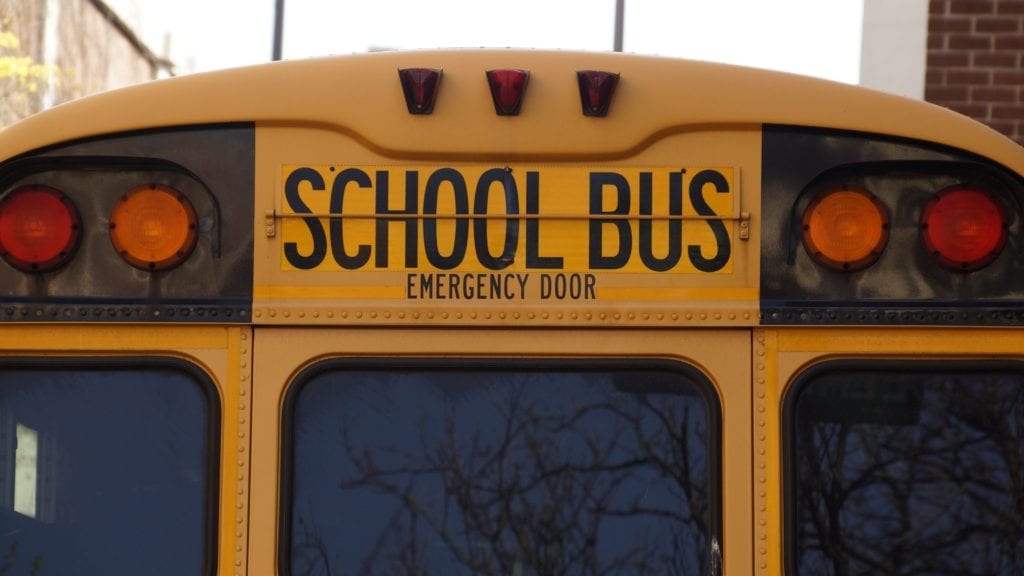27 Aug Back to School Safety
As hard as it is to admit, summer is sadly coming to an end. Hopefully, you were able to take advantage of the nice weather and have some quality time with your family, because school is once again right around the corner. Back to school time can be hectic for parents and kids alike, and the traffic on Long Island can reflect that.
Following Labor day, Long Island traffic picks up. School buses are out at various times in the mornings and afternoons, college students are on the highways, and many are back from a late summer vacation. There will also be many more pedestrians, since many students will be walking on the sidewalks or riding their bikes to school. Additionally, many parents will be dropping their kids off, meaning many students may be crossing the street. Even if you don’t have kids, it’s important to be aware of the increased potential road hazards that come in September.

For Drivers
It is imperative that drivers are aware of all traffic laws concerning schools and busses. These laws are very often neglected or willfully ignored. Sadly, one in five children under 15 who were killed in a traffic accident were pedestrians.
Be observant. Look out for young pedestrians in the morning and afternoon. Take extra caution when around school zones, playgrounds and residential areas. Always slow down when approaching a cross walk at a school zone.
Observe School Zone Speed Limit. Children are the most unpredictable pedestrians you can encounter. There is a reason why schools have lower speed limits. It is the driver’s responsibility to follow these posted school zone speed limits. Students could be crossing the streets in these areas for a number of reasons, and there might not be a crosswalk present to guide them. The last thing you would want is to be speeding when a kid runs across the street without warning.
Stop for Buses. When the stop sign on the bus is out, that means drivers on both sides of the road need to stay stopped until the sign has retreated. Give plenty of space for kids to cross the street to board the bus. Even after the bus has left, wait a couple of seconds or move slowly down the street. Sometimes when a kid is late for the bus they might run across the street without paying attention to try to catch the bus.
Leave Crosswalks Open. Always listen to the crossing guard. When there is no one waiting to cross the street, do not block the crosswalk at a red light. If a student were to cross the street, they now might have to walk in moving traffic in order to walk around your car.
Leave earlier. While these safety measures seem self explanatory, the extra traffic that comes with the school year means extra delays on the way to our commutes. Drivers have no problem obeying traffic laws when there is no rush. But when traffic causes possible lateness at work or other appointments, that is when drivers begin to make poor decisions. Rather then putting yourself in the stressful situation that you are running late due to school traffic, prepare earlier so you are not tempted to rush. There are many web mapping service applications (such as Maps for iOS and Google Maps) that can pretty accurately predict how long it will take to get somewhere with the current traffic calculated. Make the necessary adjustments and leave your home early enough to be ready if school buses and increased traffic cause delays.
Teach Your Kids Pedestrian Safety
If your son or daughter walks to school every day it is very important that you teach them the proper pedestrian safety so that they can prevent dangerous situations. Distraction is the biggest problem with pedestrian safety, and this is especially true for kids. Statistically, teenagers have a higher risk of getting a fatal pedestrian injury the older they are. The main cause of this involves these teens being distracted while they are walking.
As you probably guessed, the distractions stem from smart phones. Teens use their smart phones to text, browse social media and listen to music. According to a study at safekids.org the most common distraction for young pedestrians are using headphones to listen to music, with texting being a close second. It is important that you warn your teenagers of the dangers of being distracted while walking to school.
Children usually aren’t ready to start walking to school without a parent until they are 10.If you plan to let your children walk by themselves when they’re older, it’s a good idea to walk with them to school at a younger age so they are comfortable when they go alone. When they do eventually walk alone, it would be ideal for your child to walk with at least one neighbor or sibling so that they aren’t truly alone. It is best to show your child a route that has crossing guards and sidewalks.

About the Author
Steven Palermo is the managing partner for Palermo Law, Long Island’s Personal Injury Law Firm. He has been helping people receive compensation for their injuries for over 21 years. He focuses on cases involving car accidents, truck accidents, construction accidents and slip and fall injuries.
His book The Ultimate Guide to Handling New York Car Accident Claims details the ins and outs of a car accident claim in a simple, easy-to-read manner.

